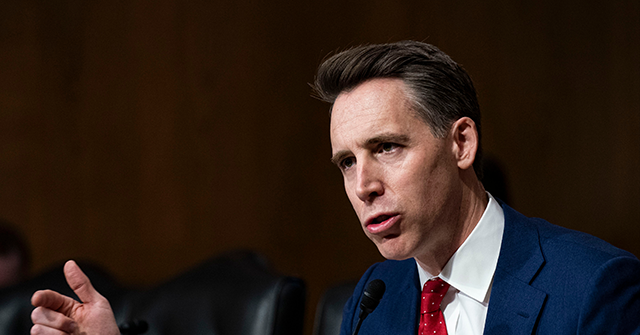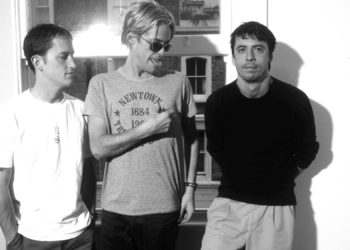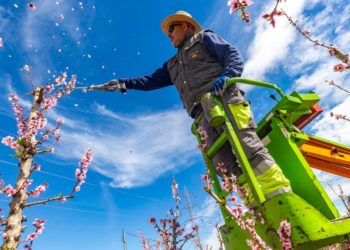Nairobi, Kenya – Weeks after Rwanda-backed M23 rebels claimed control of the Congolese city of Goma, the capital of North Kivu province, fighters are advancing in neighbouring South Kivu despite calls from regional leaders for an immediate ceasefire.
Over the weekend, leaders from the Southern African Development Community (SADC) bloc and the East African Community (EAC) bloc met in Tanzania, to discuss a way forward to restore peace in eastern Democratic Republic of the Congo (DRC), while the conflict is also high on the agenda at an African Union foreign ministers’ meeting in Ethiopia this week.
At the Tanzania summit – attended by Angola, Burundi, the DRC, Kenya, Madagascar, Malawi, Rwanda, Somalia, South Africa, South Sudan, Tanzania, Uganda, Zambia and Zimbabwe – leaders called for an immediate cessation of hostilities and the opening of humanitarian corridors.
They also directed defence chiefs from both the EAC and SADC to develop a securitisation plan for Goma and surrounding areas, without elaborating on the details. M23 had declared a ceasefire only days earlier, but resumed attacks this week.
For years, Rwanda has been accused by the United Nations, the DRC and other countries of funding and supplying M23 with weapons, allegations Kigali has long denied. During this recent offensive, Rwanda has neither confirmed nor denied that its soldiers are operating across the border, but also says it is acting in self-defence.
M23 claims it is fighting for the rights of ethnic Tutsis in the DRC, and that it’s engaging in a “defensive” war – even though this has been refuted by critics who point to the group actively seizing territory and mines, committing rights violations, and fuelling mass displacement.
At the same time, Rwanda has been accused of exploiting the DRC’s mineral resources through M23, allegations Kigali denies. M23 seized the coltan-rich area of Rubaya in DRC last year, taking control of the mines there.
Last month’s battle for Goma was the second time the rebel group took over the key city, after first temporarily taking control of it in 2012, forcing more than 140,000 people to flee.
According to the UN, since January 26 nearly 3,000 people have been killed and 2,800 others injured “in attacks by the M23 and their allies”. Since the start of 2025, at least 237,000 people have been displaced by the conflict.
The DRC cut ties with Rwanda after the rebel group’s recent advance on Goma and called for the UN to sanction Kigali. In the Congolese capital, Kinshasa, crowds also burned portraits of President Paul Kagame in protest against Rwandan involvement.
So what does Rwanda have to do with the recent escalation in DRC; is there a military solution to the crisis; does M23 have legitimate grievances; and are mineral-rich areas a factor?
The roots of DRC-Rwanda tensions
The origins of the decades-long conflict in DRC can be traced back to post-colonial battles for power after the country’s independence from Belgium in 1960, and later, a spillover of the civil war and the 1994 Rwanda genocide.
After the 1994 atrocities – during which Hutu extremists killed hundreds of thousands of mainly Tutsi people in Rwanda – many Hutus fled Kagame’s new government and settled across the border in eastern DRC. Among them were Hutu militias, including the Democratic Forces for the Liberation of Rwanda (FDLR), which began regrouping in the DRC. In response, Tutsi militias organised against these groups inside the DRC, with weapons support from Rwanda.
One of the most active armed groups has been M23, which took its name from the March 23, 2009 accord that ended a previous Tutsi-led revolt in eastern DRC. The group accuses the DRC of not honouring a deal to integrate Congolese Tutsis into the army and administration. It also says it will defend Tutsi interests against groups like the FDLR.
After M23’s last rebellion ended in 2013, it remained dormant for years until 2022 when it once again launched attacks amid disagreements with the Congolese government, which has refused to directly negotiate with the group until it disarms.
According to evidence from UN experts, Kigali backs M23 with weapons. The UN also found evidence of Rwandan troops inside the DRC. According to a December 2024 report (PDF), soldiers from the Rwanda Defence Forces (RDF) were in Congolese territory between May 21, 2024 and August 2, 2024.
“The facts on the ground and all available evidence make it clear: Rwandan Defence Force (RDF) soldiers are on Congolese soil, actively fighting alongside the M23 rebel group,” Kambale Musavuli, an analyst with the Center for Research on Congo, told Al Jazeera.
“Over the past two years, the UN Group of Experts has documented RDF troop movements and the transfer of advanced military equipment – including short-range air defence (SHORAD) systems, night vision goggles, and anti-drone missiles directly linked to the Rwandan military,” he added.
However, in a recent interview with CNN, Rwandan President Kagame denied having any knowledge of RDF troops in DRC.
“There are many things I don’t know,” he said. “But if you want to ask me, is there a problem in Congo that concerns Rwanda? And that Rwanda would do anything to protect itself? I’d say 100 percent,” Kagame added in the interview.
Victor Tesongo, a spokesperson for the AFC-M23 rebel alliance in DRC, also recently said the group receives no support from Rwanda.
Nevertheless, M23 members have historic ties with Rwanda. The leader of the group, Sultani Makenga is a former army colonel who was among Congolese Tutsi fighters in the Rwandan Patriotic Army (RPA), the military wing of the Rwandan Patriotic Front (RPF), during Rwanda’s 1990-1994 civil war. He later became an officer in the Congolese army before defecting to lead M23 in 2012.
M23, and Makenga, have been accused of war crimes including forced recruitment of child soldiers, massacres, rapes and attacks on civilians in eastern DRC.
Meanwhile, Rwandan forces have been accused of violating the DRC’s sovereignty.
“Rwandan forces must withdraw from the DRC … The sovereignty and territorial integrity of the DRC, a member of the African Union, is being violated by a foreign military force,” said the analyst Musavuli.
He said, “History shows that reining in M23 and its Rwandan backers is possible”, pointing to “sustained diplomatic and economic pressure” from Western countries and institutions that worked to end the last M23 incursion in 2012-2013.
However, he said, this time: “We see a glaring double standard: Western nations swiftly impose sanctions and take action in conflicts like Ukraine, yet they hesitate when it comes to the suffering and destabilisation of the Congo.”
Mineral-rich eastern DRC
The conflict between Rwanda and the DRC has escalated over the last year following the late 2023 exit of EAC regional forces from North Kivu province. In the months that followed, M23 was able to seize significant territories in the mineral-rich region, including Rubaya – which is a main mining site for coltan, a key resource in mobile phone production.
Rwanda has also been accused of working with the M23 to exploit DRC’s vast minerals and raw materials. A 2024 UN report revealed that between 3,000 and 4,000 Rwandan soldiers were fighting in eastern DRC alongside the M23.
M23 has also seized significant mining territories and supply routes for the export of minerals to Rwanda since April 30, 2024, according to a UN experts’ report.
The rebel group makes $800,000 a month from taxes in mining areas, the report said.
The UN report showed that minerals were loaded twice a week into convoys of four to five vehicles with the capacity to transport up to five tonnes per load. From mid-May to late October, the volumes and frequency of minerals leaving Rubaya for Rwanda were constant, with the AFC-M23 controlling the mining, trade and transport of about 120 tonnes of coltan per month.
Musavuli said Rwanda’s actions in eastern DRC are “enabling the continued plundering of the country’s vast mineral wealth while displacing millions”.
Rwanda-based researcher and analyst Frederick Golooba-Mutebi, however, dismissed allegations that Rwanda exploits the DRC’s minerals and resources, insisting that the existence of the FDLR – whose members participated in the Rwandan genocide – was the core problem both for Kigali and the Tutsi community in the DRC.
“M23’s rise is connected to [the DRC’s] persecution of the Tutsi community. Accusations that Rwanda is after minerals are a distraction. There is no serious government that would send troops into another country to steal minerals. That’s not how governments work,” he said.
According to Goolooba-Mutebi, the safety concerns of the Tutsi community in the DRC should be addressed.
“Rwanda is too small to afford to sit by and wait for the FDLR to invade its territory. To prevent such an outcome, they have what they call a security posture. Essentially it means that, should they establish that there is a risk of being attacked, they will strike first,” he told Al Jazeera.
Military or diplomatic solutions
The recent onslaught on the two Kivus is the worst escalation of conflict in more than a decade. Despite making claims of a ceasefire, M23 has continued to advance towards the city of Bukavu, reportedly seizing two nearby towns Ihusi and Kalehe, this week.
The group has threatened to continue its offensive to the capital, Kinshasa. However, analysts doubt whether it can take the capital.
DRC’s President Felix Tshisekedi, in an address shortly after M23 captured Goma, promised a vigorous military response against the group.
Onesphore Sematumba, the Great Lakes senior analyst for the International Crisis Group, said all parties involved in the conflict must seek a non-military solution.
“The sidelining of main actors like M23″ in diplomatic talks, he said, “needs to end.
“This rebel group has shown the power they have today after taking Goma … The parties involved cannot continue to ignore them,” Sematumba added.
Both Rwanda’s Kagame and DRC’s Tshisekedi failed to show up at Luanda, Angola in December, where peace talks were to be held, led by Kenya’s former President Uhuru Kenyatta and Angola’s Joao Lourenco.
As the EAC and SADC leaders met this weekend in Tanzania, Tshisekedi again failed to attend the summit in person, sending his prime minister to represent him, though he later joined virtually.
Tshisekedi has so far refused to negotiate with the M23.
Meanwhile, South Africa’s President Cyril Ramaphosa called for all uninvited foreign armed forces to withdraw from DRC.
The DRC has continuously relied on foreign troops and the UN to help fight rebels. In December 2023, after a request from Kinshasa, the UN peacekeeping mission MONUSCO began a phased withdrawal; however, that has not concluded. At about the same time, the DRC failed to renew the mandate of the EAC Regional Force, which was deployed in 2022 after M23 regrouped.
Following the exit of the EACRF, the Southern African Development Community (SADC) authorised a few thousand troops to deploy to the DRC. As of this month, South Africa had lost 14 soldiers in eastern DRC.
Analysts have warned that the DRC’s reliance on foreign troops to defeat rebel groups could prove costly over time, as the country has not fully supported its own army to fight their battles.
Sandile Swana, a political and governance analyst in South Africa, said that the DRC’s reliance on mercenaries and foreign armies to defeat M23 made the prospects of a peace breakthrough harder.
“The two parties will continue to fail to negotiate if Tshisekedi is trusting other people to rescue him from M23 rebels, because from face value he does not have the military power to defeat these rebels on his own,” Swana said.
Meanwhile, if hostilities continue, the UN has warned of a major humanitarian and regional crisis. “If nothing is done, the worst may be yet to come, for the people of the eastern DRC, but also beyond the country’s borders,” UN human rights chief Volker Turk said last week.
Analyst Musavuli agreed. “The current crisis in the DRC is not simply a domestic conflict but a regional and international issue that requires bold, decisive action. Without addressing these core issues, peace in the Great Lakes region will remain elusive.”
The post As the DRC battles Rwanda-backed M23, what’s needed to stop the fighting? appeared first on Al Jazeera.




